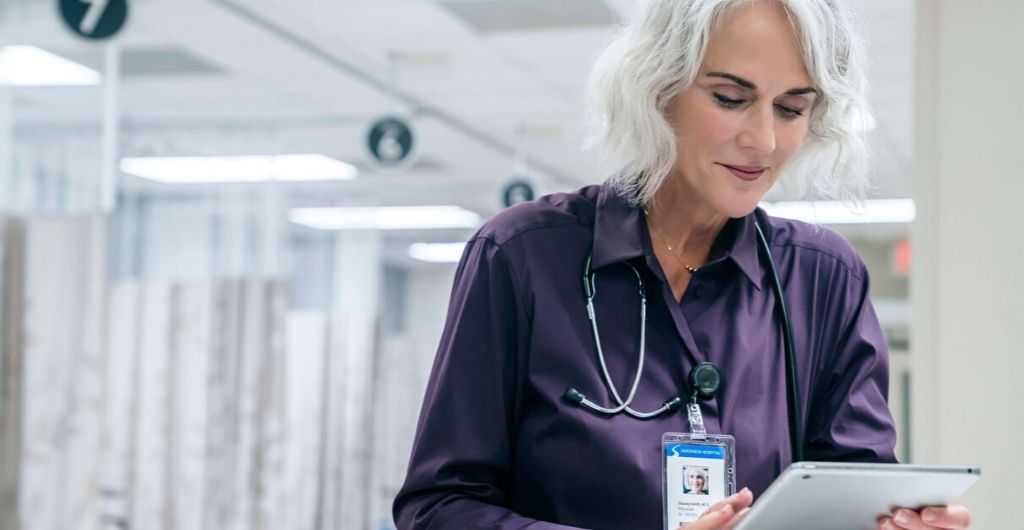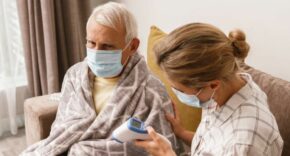
The NHS has been fundamentally reshaped over the past few months. Plans and ideas that have been pushed for years suddenly received the green light by default. Video conferencing for outpatient services; telephone triage to determine the need for a GP appointment followed by tele- or video calls. Workloads have transformed – as has the speed and means of access to services. Furthermore, patient behaviour has seismically changed – with Emergency Departments in England reporting a 57% drop in attendance during April. Finances have been overhauled, following the government’s write off of £13 billion of historic debt to allow planning and investment in future service delivery.
There are huge challenges ahead – from managing delayed cancer treatments to catching up on elective programmes. But one point is absolutely clear: no one in the NHS wants to go back to the way things were before Covid-19. The NHS has had an unexpected reset: is there enough commitment at all levels – political, management and front line – to embed that reset and deliver tangible, overdue, change?
As Deb Sutton and Daniel Wadsworth, TeleTracking insist, this is a once in a generation opportunity to transform the NHS. We need to grasp it now.
Conflicting Priorities
Six months ago, the NHS was mired in debt, wrestling with conflicting priorities and inching at a painfully slow pace towards digitally enabled service delivery. At every step, delay and ingrained bureaucracy challenged and constrained essential change. In many cases, inspired individuals on the front line were too dispirited to even consider suggesting opportunities for improvement. There was no logical way to balance budgets and financial recovery with the conflicting demands of A&E waiting times, surgical waiting lists, cancer targets, patient complaints, staff morale, staff retention, and a large nursing deficit. And underlying everything, the constant stress created by a lack of beds. This was business as usual six months ago.
Life throughout the NHS has changed fundamentally since then – and there is now an opportunity to retain and sustain better ways of working. The fact is that there were pockets of excellence – for example, Trusts that had embraced real-time bed management and had released 190+ additional nursing hours a week back to care. But each individual initiative, each attempt to explore improvements was a massive, uphill battle.
Covid-19 – or specifically lockdown – forced the UK, and the rest of the world, to completely reconsider every aspect of health delivery, from A&E to maternity wards, GP surgeries to surgery and outpatients. With everyone but key workers, most notably NHS Heroes, compelled to stay at home, every NHS institution simultaneously experienced the level of immediate change usually associated with a major incident within just one or two hospitals.
Seize the Moment
While pandemic planning has long been part of both government and NHS strategy, few could have imagined the seismic transformation in service models and patient attitudes that has occurred over a few weeks. According to NHS England, 99% of GP practices are now using remote consultation platforms. Those hospitals with system wide, holistic visibility of bed capacity had a real-time view of the full bed base, providing vital information regarding patient location in critical surge areas and the amount of PPE required. Virtual training sessions have been set up via MS Teams and Zoom to upskill clinical staff to be able to work on Covid-19 wards. ePrescription services have ensured repeat prescriptions are delivered direct to patients at home, reducing pressure on community pharmacy services.
Yet not one of these technologies is new. Many have been available for ten years or more. Most have been demanded for just as long. What changed was the motivation, the imperative and the empowerment of local decision makers that has broken through entrenched barriers. It is that motivation and recognition of what can be achieved that needs to be captured today.
The fact is things have changed. Finances are different for a start, with the £13.4 billion debt write off. Patient attitudes have also shifted – from the sustained applause for NHS Heroes to acknowledging that not every minor injury requires a visit to A&E, or even a GP. The NHS has been reset and rather than sliding back to compromised processes and bureaucratic delay, why not apply the learning from Covid-19? The pandemic has shown clearly that hospitals need the ability to better separate pathways, both now and in preparation for a second spike and / or a future viral outbreak. So why not now reset the way patients flow through hospitals; give nurses and clinical staff time back to care for patients, automate processes with digital solutions, remove the incessant administrative paper burden that used to keep a hospital running and even add some joy in work along the way?
Proven Digital Transformation
Mobile applications have played an important role during Covid-19 – with many GPs using their own mobile devices to video call patients. Within Trusts, the use of mobile devices can transform patient flow and avoid the endemic delay in providing patient care. Real-time visibility of the entire bed estate – both across large health economies and single hospitals – provides the foundation for reducing idle bed time and transforming patient flow. Add mobile apps – for bed managers, porters, cleaner and executive teams – to that real-time view and individuals are able to act upon that information immediately.
For example, an auto-discharge process, using RFID badges, not only turns the bed from ‘in use’ to ‘dirty’ on the system but also sends a cleaning request to the bed cleaning team which is picked up on a mobile app. After cleaning the bed – removing that task from nurses – the bed cleaner simple clicks ‘complete’ on the app and the bed becomes ‘clean’ on the system and ready to be assigned to a patient. With a portering app it takes just 10 seconds to request a porter. As soon as the patient is transported, again this is confirmed via the app, the patient is removed from the bed list, and placed in the bed on the system.
No manual computer/PAS updates, no phone call, no meeting, no walking, no frustration. No having to manually declare a bed is ready, no manual computer input to turn the bed dirty and then clean in the system. No having to write a request on paper and take it to the porters’ lodge, no manual computer input having to admit the patient into a bed. A process which could take up to 24 hours depending on admin staff shift patterns to complete has happened in minutes, a true flow enabler.
Grasp the Opportunity
This is the moment. It is a once in a generation opportunity for change. We may be over the first wave of the Covid-19 crisis, but we are being warned to expect a second. Hospitals are slowly reopening and soon the flow of patients will begin again. There is a huge backlog to address – from outpatient appointments to vital cancer treatments. Yet even when hospitals have been quiet it has taken up to an hour from assigning a bed to a patient to that patient being moved into the bed. An hour. If we return to business as usual, the same problems will rapidly emerge and ‘No beds!’ will be heard at bed meetings again. It is imperative that does not happen; it is imperative that policy makers, executives and front line staff grasp the opportunity; it is imperative to begin business better than usual today.











